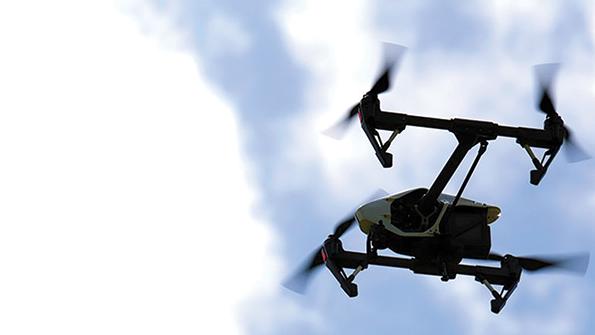Opinion: The UK’s Drone Strategy Needs More Legwork

The UK’s minister of state for security, Brandon Lewis, is recommending a strategy to work with industry, including manufacturers, to harness the extensive benefits from safe operation of drones and to tackle nefarious use of them.
With the growing use of drones amid the vast range of societal benefits and commercial opportunities, Lewis recognizes the lack of a silver bullet for improper use. To that end, he has stated emphatically that we should not “let these criminals ruin it for the rest of us.” Instead, he suggests a wide-ranging approach, including new laws, recognizing that new technology and public information are crucial for the safe and appropriate use of drones as they are integrated into our skies.
A strategy focused on countering misuse of drones is only one part of an effective, overall drone strategy. Ensuring drones can be flown safely—including operations in and around sensitive areas such as airports and urban environments—is vital in enabling the drone industry to flourish and wider sectors to take advantage of all drones can offer.
Coherency and Integration
It is clear that drones have many purposes—from recreational/hobbyist flying and industrial inspections to life-saving search and rescue operations. However, they need to be safely and routinely integrated into everyday aerial traffic flows, especially when flying beyond visual line of sight of the pilot. They need to be able to adhere to a planned path through the air or quickly and autonomously adapt their route in response to unforeseen circumstances and hazards.
In the UK, the Civil Aviation Authority (CAA), air traffic controllers (ATC) and pilots all contribute to the safe operation of aircraft. The rising number of drones are presenting new challenges. For example, a delivery drone may need to cross “controlled airspace,” managed by air traffic controllers. At present, ATC remains heavily reliant on manned processes and authorizations. Adapting these processes to cope with the predicted number of drones is simply not scalable to meet the predicted volume of future commercial drone traffic.
Air traffic controllers talk to manned aircraft over radio and track aircraft using radar. Due to the current technology used by controllers, they cannot do the same with drone pilots. Even if ATC equipment was able to track drone activity, the sheer volume of forecasted traffic would make the technology an impractical way of patrolling the skies. Therefore, new systems that can assist day-to-day traffic management through automation are needed.
With a fully effective, holistic strategy and appropriate technology, drones can be fully integrated into an environment as busy and complex as an airport, and even situations involving rogue drones or unplanned movement by manned aircraft can be safely managed.
Ultimately, the authorities and those managing the airspace need to have a complete view of all the activity in the skies above them and therefore an ability to identify both cooperative and uncooperative drones within their airspace. Counter-drone technologies, although a crucial part of a wider strategy, should be integrated into new digital systems managing the airspace. This will enable authorized drone flights to be recognized, allow legitimate users to be free from any suspicion in the event of a disruptive incident and facilitate necessary actions to be focused on the problem.
Reporting Unplanned Events
The wider drone industry is somewhat behind manned aviation in the reporting of unplanned events. With no industry-wide function available for drone pilots and operators to report incidents in which they or their drones are involved, industry still has far to go.
Drone operators are directed toward the CAA system to report occurrences, but the CAA reporting system has been designed for incidents involving manned aircraft that can require a great deal of technical and operational data and the expertise of an experienced aviator. To nonpilots, this could appear extremely daunting and deter drone operators from reporting incidents.
A drone operator may feel that, compared to a near collision of two passenger aircraft, their “minor” incident, accident or episode is not worth reporting. Altitude Angel has introduced an anonymous “Just Culture” reporting portal to capture lessons learned from every instance.
The minister’s statement is undeniably a step in the right direction, but a strategy focused on counter-drone technology alone will fail to enable the vast social and economic benefits that drones can bring. At the same time, we need to recognize how much catching up is required. It is vital that the drone community draw on lessons from manned aviation and begin to capture and use safety data, as the rest of the aviation industry does, to improve on the safe use of unmanned aircraft.
Phil Binks is the head of Air Traffic Management for Altitude Angel.
The views expressed are not necessarily those of Aviation Week.




